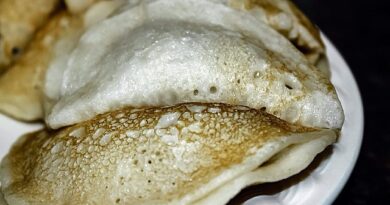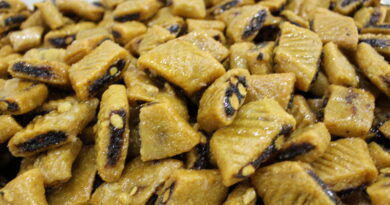Bambusoideae
The Breathtaking World of Bambusoideae: Exploring the Diversity and Importance of Bamboo
Introduction
In the realm of the plant kingdom, few species can match the elegance, versatility, and sheer ecological importance of bamboo. Belonging to the subfamily Bambusoideae, bamboo is not just a plant; it’s a vital part of cultures, economies, and ecosystems around the world. In this comprehensive exploration, we will venture into the mesmerizing world of Bambusoideae, delving into its history, diversity, uses, and the critical role it plays in sustainable living and environmental conservation.
Chapter 1: The Remarkable Family of Bambusoideae
To understand the allure of bamboo, we must first examine its botanical background. Bambusoideae is a subfamily of grasses, belonging to the Poaceae family. While the word “bamboo” is often used as a general term, it’s essential to recognize that Bambusoideae encompasses a diverse range of bamboo species, each with unique characteristics and adaptations.
This subfamily is further divided into two tribes: Bambuseae and Olyreae. Bambuseae includes the majority of bamboo species and is known for its woody, tree-like bamboos, while Olyreae comprises smaller, herbaceous bamboos.
Chapter 2: The Origins and Distribution of Bamboo
The origins of bamboo can be traced back to ancient times, with fossils suggesting that bamboos have been around for millions of years. They are believed to have originated in the tropical and subtropical regions of Asia, Africa, and the Americas. Today, bamboo is found on every continent except Antarctica, demonstrating its adaptability to a wide range of climates and environments.
The largest diversity of bamboo species can be found in Southeast Asia, where bamboo has played a pivotal role in cultures and economies for centuries. China, in particular, stands out as a major bamboo-producing nation, contributing significantly to the global bamboo industry.
Chapter 3: The Breathtaking Diversity of Bamboo
One of the most captivating aspects of bamboo is its astonishing diversity. There are over 1,500 recognized species of bamboo, each with its unique characteristics. These can be broadly categorized into two types: running bamboos and clumping bamboos.
- Running Bamboos: These bamboos have rhizomes that spread underground, allowing them to spread quickly. Running bamboos are known for their rapid growth and are often used for timber and construction.
- Clumping Bamboos: Clumping bamboos, as the name suggests, form clumps or tight clusters. They tend to be more manageable and are popular for ornamental and landscaping purposes.
Some notable bamboo species include:
- Giant Bamboo (Dendrocalamus giganteus): As the world’s largest bamboo species, it can reach heights of over 100 feet (30 meters) and is highly valued for its timber.
- Bamboo Orchid (Arundina graminifolia): Notable for its delicate and orchid-like flowers, this bamboo species is known for its ornamental beauty.
- Golden Bamboo (Phyllostachys aurea): This running bamboo species features striking golden-yellow culms and is commonly used in landscaping.
Chapter 4: The Versatile Uses of Bamboo
Bamboo is often referred to as the “plant of a thousand uses,” and for good reason. Its versatility extends to numerous aspects of human life:
- Construction: Bamboo is renowned for its strength and flexibility, making it an excellent construction material for buildings, bridges, scaffolding, and even earthquake-resistant structures.
- Furniture and Decor: Bamboo’s natural beauty lends itself to furniture and decor items such as chairs, tables, lampshades, and woven baskets.
- Textiles: Bamboo fibers are used to produce soft and breathable textiles, including bamboo clothing, bed linens, and towels.
- Culinary Uses: In many parts of Asia, bamboo shoots are a culinary delicacy, used in a variety of dishes. Bamboo leaves are also used for wrapping food.
- Paper and Pulp: Bamboo pulp is used to create high-quality paper products, including tissue paper, stationery, and even sustainable packaging.
- Musical Instruments: Some traditional musical instruments, such as flutes and xylophones, are crafted from bamboo.
- Gardening and Landscaping: Bamboo is a popular choice for creating garden borders, screens, and privacy hedges.
- Sustainable Building: Bamboo is recognized as an eco-friendly and sustainable building material, making it an essential element in green architecture and design.
Chapter 5: Bamboo in Culture and Tradition
Throughout history, bamboo has held significant cultural and traditional importance in many societies. Some notable examples include:
- China: Bamboo is a symbol of resilience and strength in Chinese culture. It’s often associated with qualities such as flexibility and adaptability.
- Japan: In Japanese folklore, the sound of the bamboo flute is believed to call forth the spirits of the forest.
- India: Bamboo is an essential material in various Indian traditions, including the making of musical instruments, tools, and ritual objects.
- Southeast Asia: Many Southeast Asian cultures revere bamboo for its role in daily life, from housing construction to culinary traditions.
Chapter 6: The Role of Bamboo in Environmental Conservation
In an era of climate change and environmental challenges, bamboo emerges as a key player in sustainable living and conservation efforts. Some of the ways bamboo contributes to environmental conservation include:
- Carbon Sequestration: Bamboo has a remarkable ability to sequester carbon dioxide (CO2) from the atmosphere, helping mitigate climate change.
- Soil Erosion Control: Bamboo’s extensive root system helps stabilize soil and prevent erosion, making it a valuable resource in reforestation efforts.
- Habitat Restoration: Bamboo plays a crucial role in restoring degraded habitats and providing shelter for wildlife.
- Sustainable Forestry: Bamboo can be harvested sustainably, reducing pressure on traditional timber sources and promoting responsible land management.
Chapter 7: Bamboo: A Sustainable Future
As the world grapples with issues of sustainability and environmental conservation, bamboo emerges as a beacon of hope. Its rapid growth, versatility, and low environmental impact make it a vital resource for a sustainable future.
Whether used in construction, fashion, agriculture, or countless other applications, bamboo embodies the principles of sustainability, resilience, and adaptability. It reminds us of the profound connection between human prosperity and the health of our planet.
Conclusion: The Endless Marvels of Bamboo
In the vast tapestry of nature, bamboo stands as a testament to the wonder and potential of the natural world. Its grace, adaptability, and contribution to human life and the environment make it a plant of limitless possibilities.
As we continue to explore and harness the myriad uses of bamboo, we also recognize our responsibility to protect and sustain the diverse ecosystems in which it thrives. The story of Bambusoideae, with its intricate cultural heritage and ecological significance, serves as a reminder of our interconnectedness with the Earth and the boundless wonders it has to offer.



